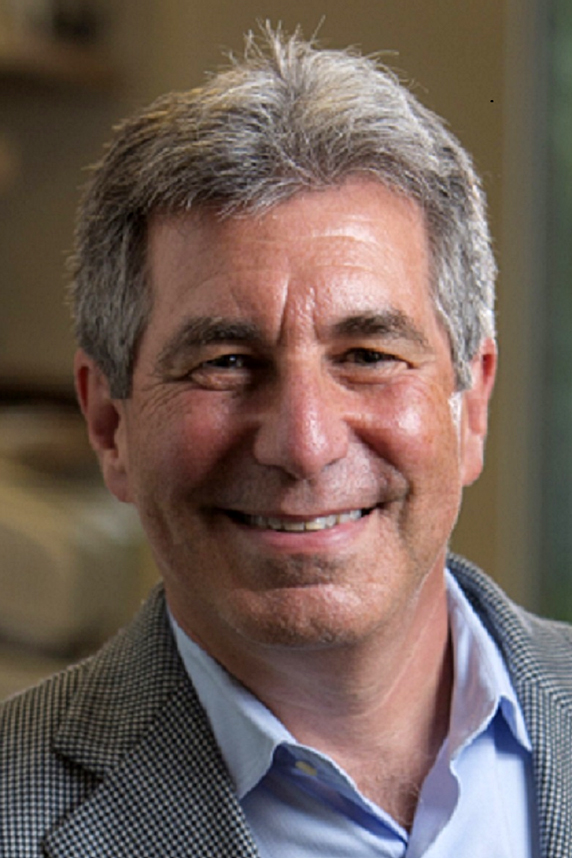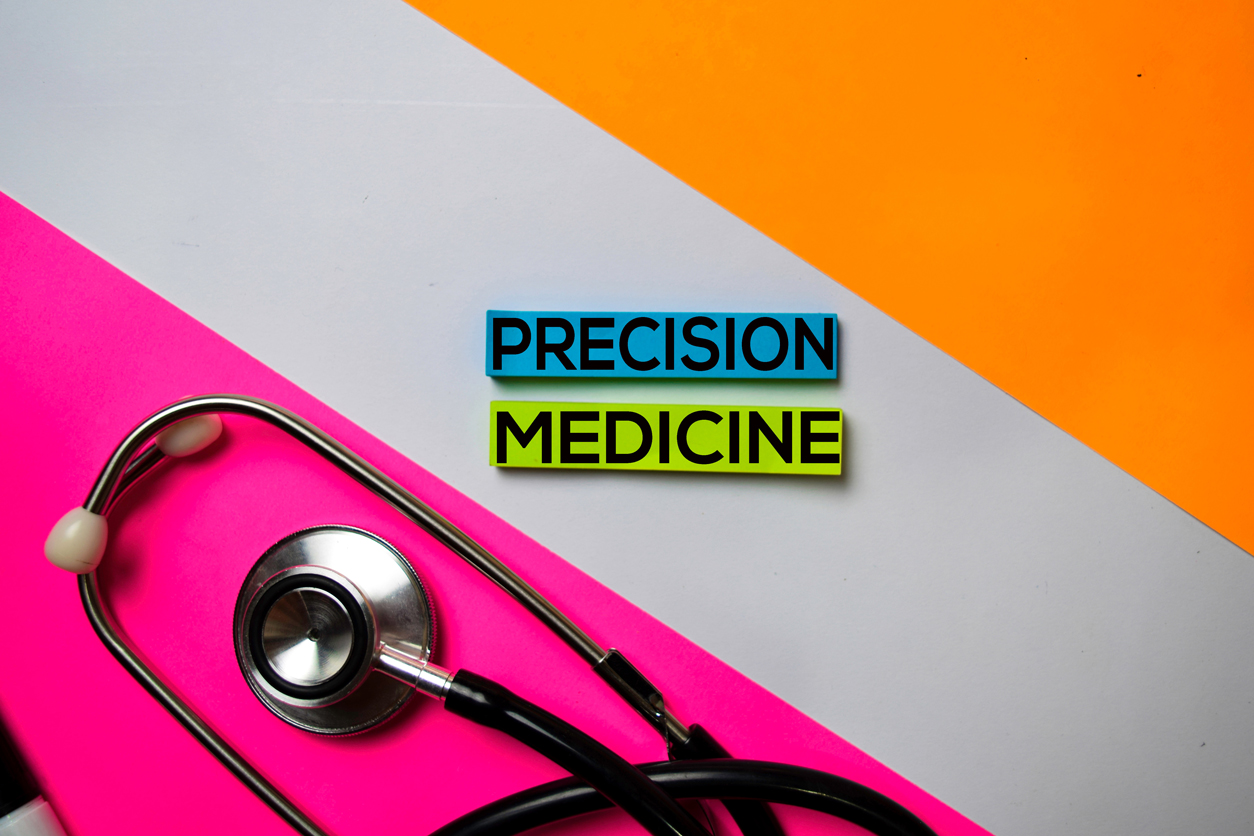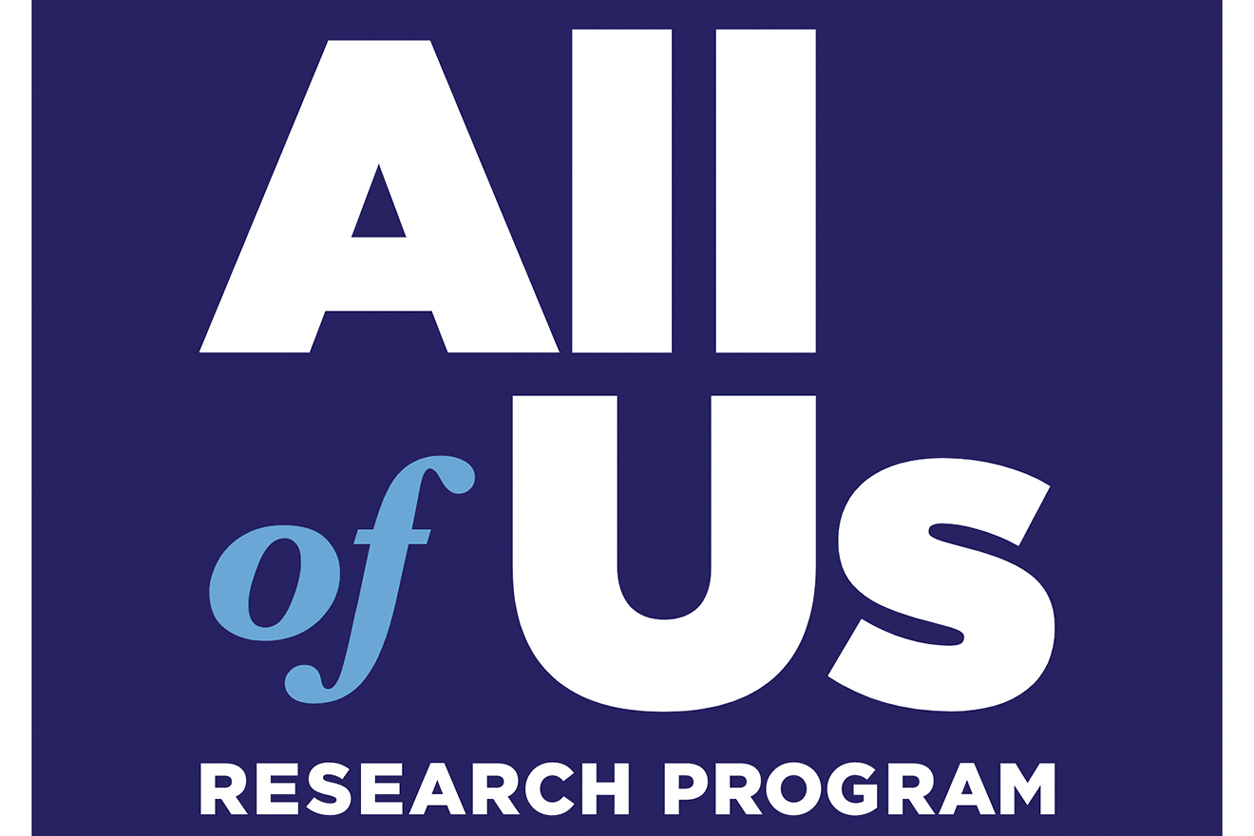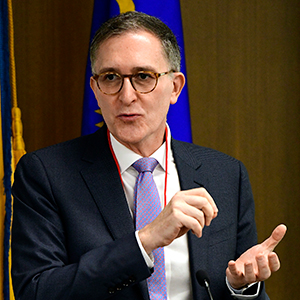 Rick Woychik, Ph.D., directs NIEHS and the National Toxicology Program. (Image courtesy of NIEHS)
Rick Woychik, Ph.D., directs NIEHS and the National Toxicology Program. (Image courtesy of NIEHS)In January, internationally renowned genomics and precision medicine expert Geoffrey Ginsburg, M.D., Ph.D., from the Duke University School of Medicine, became the chief medical and scientific officer for the National Institutes of Health (NIH) All of Us Research Program. I recently spoke with him to learn more about the initiative, which aims to advance precision medicine — individualized diagnosis, prevention, and treatment of disease — through development of a long-term, diverse cohort of at least one million Americans.
The program opened for enrollment in 2018, and it will incorporate information from participants’ health surveys, biospecimens, electronic health records, sequenced genomes, wearable technologies that may record environmental exposures, and more. That wealth of data can help scientists spur significant breakthroughs in biomedical research, and it could inform clinical guidance on how factors related to genetics, lifestyle, and the environment may affect health.
 “The mission of the All of Us Research Program is to accelerate health research and medical breakthroughs that enable individualized prevention, treatment, and care,” said Ginsburg. (Photo courtesy of Geoffrey Ginsburg)
“The mission of the All of Us Research Program is to accelerate health research and medical breakthroughs that enable individualized prevention, treatment, and care,” said Ginsburg. (Photo courtesy of Geoffrey Ginsburg)Ginsburg is tasked with developing the program’s scientific vision and strategy. Among other accomplishments, he is founder of the Center for Applied Genomics and Precision Medicine at Duke’s School of Medicine, and he was an executive at Millennium Pharmaceuticals, now known as Takeda Pharmaceuticals. Before those roles, Ginsburg served on the Harvard Medical School faculty and ran a laboratory at Boston Children’s Hospital that focused on applied genetics and cardiovascular diseases. He has published more than 300 peer-reviewed scientific papers, and he is founding co-chair of the International HundredK+ Cohorts Consortium and founder and president of the Global Genomic Medicine Collaborative.
During our in-depth conversation, Ginsburg, who will spend part of his work time at the NIEHS campus in Research Triangle Park, North Carolina, shared exciting developments related to the All of Us program. We talked about the importance of incorporating environmental factors into the initiative and reporting back findings to study participants, and I asked Ginsburg what inspired him to pursue a scientific career (see sidebar).
Advancing precision medicine
Rick Woychik: Congratulations on having been selected as the chief medical and scientific officer for the All of Us Research Program. Can you provide Environmental Factor readers with more insight into this initiative and how it supports precision medicine?
Geoffrey Ginsburg: I just want to start by saying that I am thrilled to be in this position because I have been a big fan of this program since its inception. I remember very well when President Obama announced the Precision Medicine Initiative in 2015 to really catapult science toward greater public health impact, and the All of Us program began shortly after that. There are many definitions of precision medicine, but we're fundamentally talking about synthesizing as much information as possible to help individuals make better health care decisions for themselves.
Our program is focused on recruiting at least one million people across the United States, and we have sought to address the problem of underrepresentation in biomedical research as it pertains to race, ethnicity, urban versus rural populations, age, and so forth. Historically, many groups in the broader population have not been represented in large cohort studies and biomolecular databases, so I think our program is filling an important strategic gap.
Approximately 50% of participants — nearly 475,000 so far — identify as white, and about 50% identify with other racial groups. That makes for the most diverse cohort of this type on the planet. Even among our white enrollees, many identify with attributes that make them underrepresented in biomedical research, such as disabilities, the fact that they live in rural settings, and so forth. The diversity of All of Us is truly remarkable.
I also am excited to report that as of this conversation, we have obtained 347,000 biospecimens and more than 287,000 electronic health records. Also, over 326,000 participants have taken their first step with the program in terms of providing us with health surveys and other data. In addition, we just celebrated the release of our first genomic dataset, making available more than 98,000 whole genome sequences. Our hope is that by early 2023, we will release another large dataset of whole genome sequences to the biomedical research community to build on the available data.
 Understanding how genes, lifestyle factors, and environmental exposures interact is critical to advancing precision medicine. (Image courtesy of bangoland / Shutterstock.com)
Understanding how genes, lifestyle factors, and environmental exposures interact is critical to advancing precision medicine. (Image courtesy of bangoland / Shutterstock.com)It is amazing how the program has progressed in just a few years. Our cohort is longitudinal, which means that we’re going to follow-up with participants for decades. This should help to drive research that helps us better understand how individuals become sick or develop disease over time. We will acquire a massive amount of data involving health and disease transitions. That will allow us to better understand health risks, diagnose disease, and maybe even develop therapeutics, all with an eye toward enhancing individuals’ quality of life.
Incorporating environmental exposures
RW: My next question relates to the fact that people get sick not just because of genetic factors but also because of environmental exposures that can trigger disease phenotypes. In addition, it has become increasingly clear that gene-by-environment effects require more study. What is your vision for including environmental factors in datasets collected for the All of Us program, and what are your thoughts on incorporating analysis of the exposome, which involves the totality of environmental exposures we experience, not just single chemical entities?
GG: This is an area where I think we can really be a game changer. In my view, most epidemiological studies are devoid of robust environmental data, and virtually none of the large-scale studies involving genomics data have had useful environmental data. So, there certainly are knowledge gaps and opportunities for innovation, and I think we will be able to work closely with the expertise at NIEHS to move the science forward.
Our program can get granular in terms of knowing participants’ zip codes, census blocks, and other geospatial locaters, and we have a geographically diverse cohort. That gives us an opportunity to examine a variety of environmental influences, including the impact of climate change on health. During the last decade or so, we have seen — probably because of global warming — major environmental disasters around our country, with wildfires in the West and flooding in the East, and I see All of Us opening doors for research into the health effects of climate-related weather events. I should add that there are satellite data and geospatial data being collected by agencies such the National Aeronautics and Space Administration and the National Oceanic and Atmospheric Administration, which teams here at NIEHS are tapping into, that can greatly inform our work in this area.
Regarding the exposome, there are feasible, cost-effective technologies available today that can capture an increasing number of exposures. I know of studies in which people wear small, noninvasive devices to assess exposure to substances such as PM 2.5 [fine particulate matter], pesticides, polycyclic aromatic hydrocarbons, tobacco products, and flame retardants. Whether we are talking about silicone wristbands that can monitor air pollution or population-level climate information collected via satellite, I think the challenge for us is to figure out what will give us the best quality data in the shortest period of time and allow our research communities to develop novel insights into the impact of the environment on health.
Another important consideration regarding the exposome involves trying to capture and understand the corresponding biological changes caused by the totality of exposures that you mentioned. Therein lies opportunities for expanding the data in All of Us to include epigenomics, metabolomics, proteomics, and even RNA profiling. Through such analysis, researchers can start to truly understand how the exposome is manifested at the molecular level.
For our initiative to be successful, we must incorporate data not just on genetics but also the environmental and social determinants of health, with the long-term goal of using that information to inform people about their probability of developing chronic diseases.
 Learn how to participate in the All of Us Research Program, and find more information about All of Us data and tools. (Image courtesy of NIH)
Learn how to participate in the All of Us Research Program, and find more information about All of Us data and tools. (Image courtesy of NIH)Sharing findings with participants
RW: How does the All of Us program plan to manage report back of research results to participants? What are the complexities associated with doing this?
GG: If we want people to be in the program for many years, there must be a return of value — something in it for them. Participants will ask, “How can this information be used to promote my own health, and how can this data empower me to do something that I otherwise could not have done?” That is one reason All of Us is committed to returning results.
Of course, report back is complicated, and it involves partnering with communities to determine what exactly people want to know and then finding effective ways to communicate results. When it comes to genetic information, for example, there is a need for extensive genetic counseling. Also, in our cohort, there is a lot of diversity in terms of literacy and numeracy that could lead to misunderstanding. Navigating these issues with participants, health care providers, and scientists is part of the task.
Although there are challenges, I see many opportunities for environmental data return. For example, I would argue that if our participants had devices that measured ozone or other pollution in their home, they could use these environmental results to improve their health by changing their HVAC systems or even doing something as simple as closing windows at certain times. I imagine that as the All of Us program moves forward, actionable information related to the environment would be highly valued by participants, in addition to the genomic data and other data we will share with them.
In my new role, I hope to maximize both the scientific impact of the program for our research community and the value we provide to our participants. We couldn't run this program without having actively engaged participants, and I think they expect — and we have promised — return of value in exchange for their donating extensive health data to us. We can't create that value without a very robust and active research community that's engaged in their own scientific questions, but I want to make sure that we are answering the kinds of questions that will lead to the most benefits for individuals and public health.
(Rick Woychik, Ph.D., directs NIEHS and the National Toxicology Program.)









